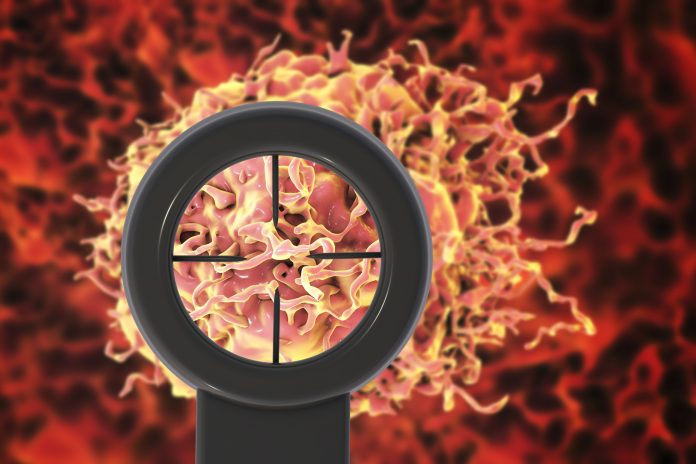
A study led by the Science and Technology Facilities Council (STFC) Central Laser Facility (CLF) has demonstrated for the first time that a crucial interface in a protein that drives EGFR resistance to targeted cancer therapies could act as a target for more effective treatments. This research, published in Nature Communications, may lead to future research into more effective, long-lasting cancer therapies.
“The Epidermal Growth Factor Receptor (EGFR) is frequently found to be mutated in non-small cell lung cancer,” the researchers wrote. “Oncogenic EGFR has been successfully targeted by tyrosine kinase inhibitors, but acquired drug resistance eventually overcomes the efficacy of these treatments. Attempts to surmount this therapeutic challenge are hindered by a poor understanding of how and why cancer mutations specifically amplify ligand-independent EGFR auto-phosphorylation signals to enhance cell survival and how this amplification is related to ligand-dependent cell proliferation. Here we show that drug-resistant EGFR mutations manipulate the assembly of ligand-free, kinase-active oligomers to promote and stabilize the assembly of oligomer-obligate active dimer subunits and circumvent the need for ligand binding.”
Various cancer treatments block and inhibit mutant EGFR to prevent tumor formation. However, these are limited as cancerous cells may develop further EGFR mutations that are resistant to treatment. How exactly these drug-resistant EGFR mutations drive tumor growth was not understood, hindering our ability to develop treatments that target them.
In the current study, scientists at CLF used advanced laser imaging techniques to identify structural details of the mutated protein which help it to evade drugs that target it.
Fluorophore Localization Imaging with Photobleaching (FLImP) analysis revealed structural details and showed for the first time with this level of precision how molecules in the drug-resistant EGFR mutation interact.
Further analysis by the Biomolecular & Pharmaceutical Modeling Group at the University of Geneva (UNIGE) used advanced computer simulations that combined with the FLImP analysis were able to provide atomistic details of the mutant EGFR complexes.
Marisa Martin-Fernandez, PhD, professor and leader of the octopus group at CLF, which led the study, said: “This finding is the culmination of years of research and technological development at CLF and our partner institutions and we’re extremely excited about its potential to inform the course of cancer research going forward. If this interface proves to be an effective therapeutic target, it could provide an entirely new approach to much needed pharmaceutical development.”
The team then introduced additional mutations to the drug-resistant EGFR in cultured lung cells and in mice that interfered with the newly discovered interfaces.
In these experiments, one of the additional EGFR mutations was shown to block cancer growth, with mice developing no tumors, further indicating that the ability of this EGFR mutation to promote cancer indeed depends on these interfaces.
Gilbert Fruhwirth, PhD, leader of the imaging therapies and cancer group at King’s College London who validated results in live animals, said: “This research has become possible through the combination of a variety of different imaging technologies, ranging from single molecules to whole animals, and demonstrates the power of imaging to better understand the inner workings of cancer. We are extremely pleased about this successful collaboration and look forward to develop this pharmaceutical opportunity further as part of this team.”
Researchers hope that these interfaces could act as potential targets for new cancer therapies that overcome resistance acquired by EGFR mutations.













